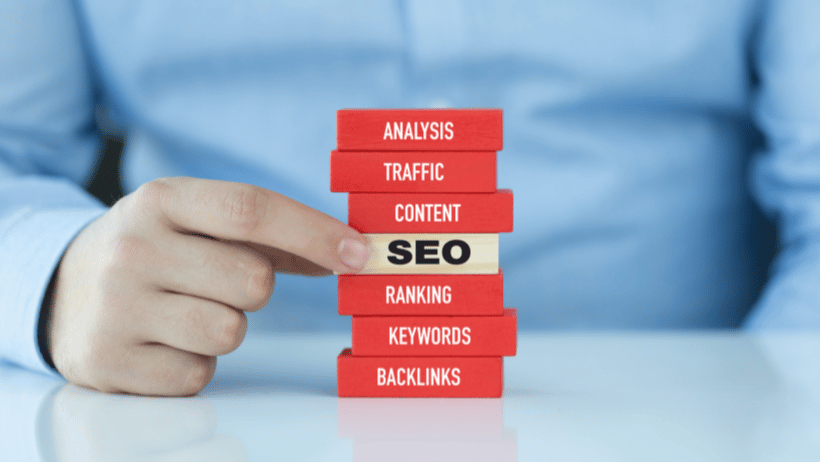How to Optimize Your SEO Post Design to Increase Traffic
Creating high-quality content is an essential aspect of any successful website or blog. However, it is not enough to create good content alone. In today’s digital landscape, it is crucial to optimize your posts for search engines to drive traffic to your website.
Search Engine Optimization (SEO) is the process of improving the visibility and ranking of your website or blog in search engine results pages (SERPs). In this article, we will discuss how you can optimize your SEO post design to increase traffic.

Table of Contents
- Introduction
- Understanding the Importance of SEO Post Design
- Choose a Relevant and Compelling Title
- Craft Engaging Meta Descriptions
- Utilize Header Tags to Structure Your Content
- Optimize Your Images
- Create High-Quality and Engaging Content
- Optimize Your Post Length
- Ensure Mobile Responsiveness
- Build Internal and External Links
- Utilize Social Media Sharing Buttons
- Optimize Site Speed and User Experience
- Monitor and Analyze Your SEO Performance
- Conclusion
- FAQs
1. Introduction
Creating valuable and engaging content is one of the most critical aspects of any successful digital marketing strategy. However, creating excellent content alone is not enough to attract visitors to your website. Without proper optimization, your content may go unnoticed.
This is where SEO comes in. SEO helps your website rank higher in search engine results pages, which in turn helps drive more traffic to your site. In this article, we will discuss how to optimize your SEO post design to increase traffic to your website.
2. Understanding the Importance of SEO Post Design
The SEO post design is the process of optimizing the structure, layout, and content of your blog post or webpage for search engines. A well-designed post not only helps search engines understand the content better, but it also enhances the user experience.
A well-structured post makes it easier for users to navigate, find the information they need, and engage with your content. Therefore, optimizing your post design for SEO is essential to improve your website’s visibility and ranking in search engine results pages.
3. Choose a Relevant and Compelling Title
The title of your blog post or webpage is one of the most critical aspects of your SEO post design. The title should be relevant to the content of your post, but also compelling enough to entice users to click through to your site.
A good title should be clear, concise, and accurately reflect the topic of your post. Moreover, including relevant keywords in your title can help improve your website’s ranking in search engine results pages.

4. Craft Engaging Meta Descriptions
A meta description is a summary of your post that appears in search engine results on pages. It should provide users with an overview of the content of your post and entice them to click through to your website. A good meta description should be between 150-160 characters, accurately reflect the content of your post, and include relevant keywords.
5. Utilize Header Tags to Structure Your Content
Header tags (H1, H2, H3, etc.) are HTML tags that indicate the importance of the content on your page. They are essential for both search engine optimization and user experience. Header tags help break up your content into sections and make it easier for users to navigate and find the information they need. Furthermore, including relevant keywords in your header tags can help improve your website’s ranking in search engine results in pages.
6. Optimize Your Images
Images can significantly enhance the user experience of your website, but they can also slow down your website’s loading time if they are not optimized correctly. Therefore, it is important to optimize your images for SEO.
This involves compressing your images to reduce their file size without compromising their quality, using descriptive file names and alt tags, and including relevant keywords in your image titles and descriptions.
7. Create High-Quality and Engaging Content
High-quality and engaging content is crucial to the success of any digital marketing strategy. It not only helps attract visitors to your website but also encourages them to stay longer and engage with your content. Therefore, it is essential to create content that is valuable, informative, and engaging to your target audience.
8. Optimize Your Post Length
The length of your blog post or webpage can also affect your website’s ranking in search engine results pages. Generally, longer posts tend to rank higher in search results, as they provide more comprehensive and detailed information to users. However, it is also essential to ensure that your content is relevant and valuable to your target audience.

9. Ensure Mobile Responsiveness
With the increasing use of mobile devices to browse the internet, it is essential to ensure that your website is mobile-responsive. Mobile responsiveness means that your website can adapt to different screen sizes and resolutions, providing an optimal viewing experience for users. A mobile-responsive website not only enhances the user experience but also improves your website’s ranking in search engine results in pages.
10. Build Internal and External Links
Internal and external links are essential for SEO. Internal links help users navigate your website and find the information they need, while external links indicate to search engines that your content is authoritative and relevant. Therefore, it is crucial to include relevant internal and external links in your blog post or webpage.
11. Utilize Social Media Sharing Buttons
Social media sharing buttons make it easy for users to share your content on their social media profiles, increasing the visibility and reach of your content. This can help drive more traffic to your website and improve your website’s ranking in search engine results pages.
12. Optimize Site Speed and User Experience
Site speed and user experience are critical SEO factors. A slow-loading website or poor user experience can negatively impact your website’s ranking in search engine results pages. Therefore, it is essential to optimize your website’s loading time and user experience to enhance the user experience and improve your website’s ranking in search engine results pages.
13. Monitor and Analyze Your SEO Performance
Monitoring and analyzing your SEO performance can help you identify areas for improvement and optimize your SEO strategy. There are several tools available to help you monitor and analyze your SEO performance, such as Google Analytics, SEMrush, and Ahrefs.
14. Conclusion
Optimizing your SEO post design is essential to increase traffic to your website and improve your website’s ranking in search engine results pages. By following the tips outlined in this article, you can optimize your post design and enhance the user experience, leading to more engagement and higher website traffic.
15. FAQs
- How long should my blog post or webpage be?
- There is no set length for a blog post or webpage, but generally, longer posts tend to rank higher in search engine results pages.
- What is a meta description, and why is it essential for SEO?
- A meta description is a summary of your post that appears in search engine results on pages. It is essential for SEO because it can entice users to click through to your website and improve your website’s ranking in search engine results pages.
- How often should I post new content on my website?
- The frequency of your content posting depends on your target audience and your content creation capabilities. However, it is essential to ensure that your content is high-quality and engaging to your target audience.




